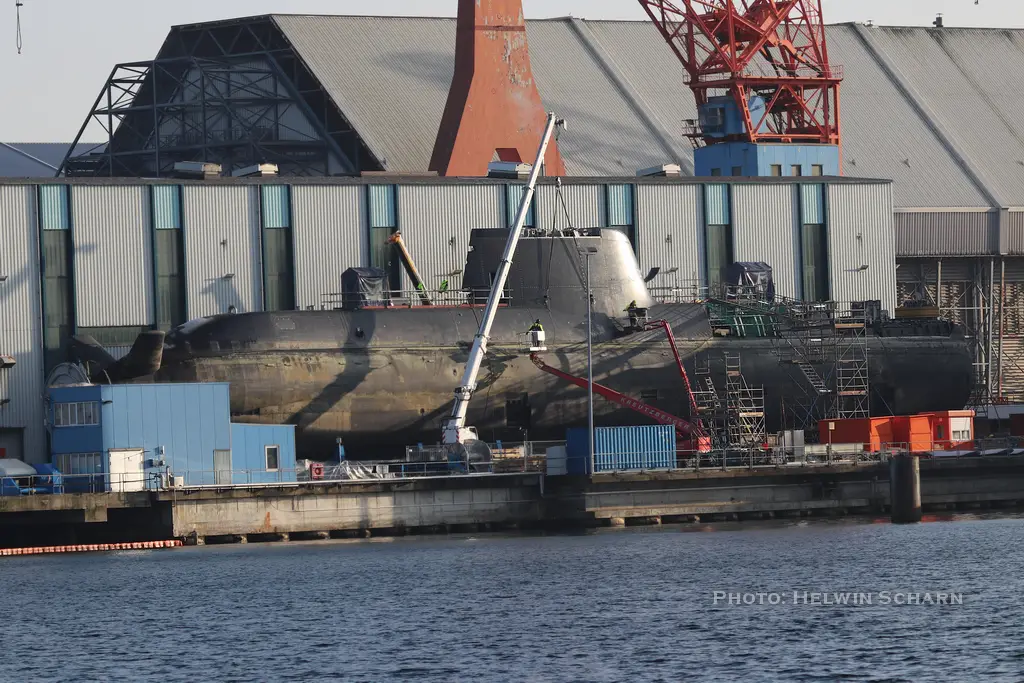Germany and India intend to sign a contract for the joint construction of diesel submarines on Indian soil for the P-75I project. According to Bloomberg, citing sources, one of the largest German industrial conglomerates, Thyssenkrupp AG, and an Indian company, Mazagon Dock Shipbuilders Limited, will compete to build six submarines. The undertaking will cost 5.2 billion dollars.
According to the agency, India desperately needs new submarines due to the obsolescence of the country’s naval forces (Navy). A minimum of 24 submarines are needed to patrol the Indian Ocean effectively, but the Navy only has 16 at present. Currently, ten of them are older than thirty years of age.
The parties are anticipated to sign a preliminary agreement on joint production during German Defence Minister Boris Pistorius’s two-day visit to India, which began on June 6 in New Delhi. This will be a large and significant contract not only for German industry but also for India and the German-Indian strategic partnership, according to German Federal Minister of Defence Boris Pistorius.
According to previous reports, Thyssen Krupp Marine Systems (TKMS) is proposing six submarines of the Invincible class. Singapore is the first customer of the Invincible class, or Type 218, which is constructed by Howaldtswerke-Deutsche Werft (HDW) and is the latest conventional platform from Germany. The 75-meter-long submarine has a surface displacement of 2200 tonnes and an endurance of 84 days, and some experts believe it also has a Li-Ion battery. Type-214, an export variant of Type 212, was the previous offer made by TKMS. Gurnad Sodhi, managing director of TKMS India, has stated that the 218’s AIP is “the best accessible on the market.”

Germany has a long-standing reputation as a dependable submarine manufacturer, with numerous global navies operating its submarines.
South Korean submarines are one of the most formidable rivals for German subs. The KSS III submarine, South Korea’s offering, is said to have evolved from the HDW-214 design. However, this is irrelevant because the KSS III is a sophisticated submarine capable of launching ballistic missiles.
South Korea became the 12th country in the world to have its own design and building technology when it developed the Dosan Anchang-ho submarine. South Korea was also the eighth country in the world to independently develop a submarine with a displacement of 3,000 tonnes or more.
In the 1980s, South Korea agreed to acquire three HDW-209 submarines, one manufactured in Germany and the rest under licence in South Korea. Submarines 2 and 3 were constructed by Daewoo Shipbuilding & Marine Engineering (DSME) at Okpo Shipyard as a pair. Finally, nine Type 209 submarines were built in South Korea.
The Indonesian Navy ordered three 1,400-ton submarines in 2011 from South Korea; in 2019, they placed an additional order for three more submarines. Consequently, South Korea became the fifth country in the world to export submarines. South Korea had beaten the German company for the Indonesian order.
In the 2000s, the South Korean Navy launched its second submarine acquisition programme, KSS-II, weighing 1,800 tonnes. The HDW 214-class sub was chosen. Notably, the 214-class submarines did not exist in physical form at the time of the second submarine acquisition initiative. South Korea acquired nine vessels. In this second portion of the project, Hyundai Heavy Industries replaced DSME, which had dominated the previous phase.
South Korea then engaged in the third phase of the submarine acquisition initiative in 2010. The third phase’s primary objectives included the construction of submarines with 3,500-ton-displacement using South Korean technology. Hyundai Heavy Industries is presently constructing the third submarine, while DSME was responsible for constructing the first and second submarines in the third phase of the acquisition project. The most notable characteristic of the first ship to bear the name Do San An Chang-Ho is its ability to transport Submarine-Launched Ballistic Missiles (SLBMs) via the Vertical Launch System (VLS). The first three ships have a VLS with six cells, while the fourth ship and beyond have a VLS with ten cells.
For ships 1 to 3, the AIP system, which employs fuel cells, is being installed. In contrast, research is being conducted for ships 4 to 6 to incorporate an improved lithium-ion battery system.
A combat management system specifically designed for the submarines has been created by Hanwha Systems. In addition, the nation has made cruise missiles that may be installed on submarines. The propulsion systems are from Germany, but Korea is localising and developing its version.
The German company is attempting to sell as a design update something that KSS III already features and is a functioning submarine.
Rosoboronexport of Russia has also offered a strategic partnership route to build Amur-1650 class submarines in India.
